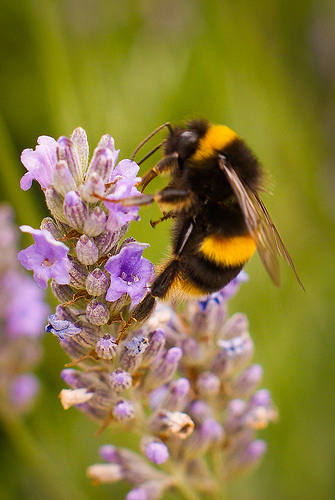“From crisis precipitates change”
~ Deltron 3030
We have all heard the ominous conversation about climate change, about its apparently devastating effects on sea levels, extreme weather events and a general “warming” of our planet.
Climate scientists almost unanimously agree that these events are happening because of anthropogenic activities (Carolan, 2014). Our ecological values in the United States are characterized by polarity, and positive change is hindered by governmental inertia.
Is there possibly a way to bring people together to collaborate on pragmatic, viable solutions to slow climate change?
I believe there is.
Unfortunately, for this to occur, a threshold must be crossed—and we are almost there.
80 percent of agriculture depends on pollinators to produce edible plant parts. These wild and sometimes domesticated bees, birds, butterflies and bats usually live in or around forested areas and travel away from the forest to pollinate anything that catches their eye.
They provide a huge service as they cross-pollinate, re-distributing genes throughout evolutionary history. Pollinators help to ensure that plants produce fruit not only in natural settings (i.e forests), but they are also integral to many agricultural systems (Gallai et al, 2009).
This is where we, humans, enter the equation. With our population already at 7.1 billion and projected to hit over 9 billion by 2050, global food security is creepily looming over us. To feed the planet we will have to become more efficient with our land usages and our distribution networks, and that in itself is a gigantic task.
But what if there is no food to distribute?
70 percent of global crop production relies in pollinators, especially wild bees (Klein et al, 2007), and these pollinators are in peril because of humans. It is as if we are biting the hand that feeds us, our own hand, and we are too oblivious to feel the teeth sinking in to our flesh.
Our food system and the places we get our food from are shifting to the point where a global food crisis is becoming a real possibility. The shift is already swinging in to motion. A decline in pollinating insects, birds, and bats is causing a decrease in food production from natural systems and agricultural systems (Kremen et al, 2002).
Not only are the individual numbers of pollinators declining, but the rate of the decline is shocking. Researchers try to keep pace with diseases like white-nose fungus that are wiping out bat populations worldwide, or the insecticides that are decimating bee populations.
But there is hope. Real, bursting, wild, hope.
Many people think they have the answer to positive conservational change. The “New Conservationists” approach is akin to conservative trickle-down economics; if an individual or society is more affluent, that directly correlates to an increased interest in conserving biodiversity. One organization that acts in such a way is The Nature Conservancy, they focus on humanitarian efforts that will supposedly trickle down to the ecosystem level. Research suggests this approach, much like the conservative economic model, is not a sustainable solution (Soule, 2010).
We need holistic, ecosystem-level approaches to conserving the precious biodiversity we have left.
Micheal Soule, a professor at UC Santa Cruz, puts it plain and simple: “Research shows that the more pieces, or different plant and animal species we have (biodiversity), in an ecosystem, the more resilient it is overall, and the more resistant it is to pest or weed invasion.” This is known as an eco-centric approach to conservation, viewing the landscape as one complex entity.
This technique to conserve our plant and animal species is more viable than the new conservationist approach, but it would only prosper in a dream-world in which our country would measure success by happiness rather than GDP. This polarization, even in the conservation world, leads to unintended real-world inactivity. We need to face the facts and deal with our situation, we are currently living in a dramatically changing climate that we cannot accurately predict.
So what do we do?
Greg Aplet, senior science director at The Wilderness Society and author Emma Marris co-wrote a New York Times piece that attempts to mend this divide among conservationists. “Should we continue to invest in keeping ecosystems in historical configurations? Should we attempt to engineer landscapes to be resilient to tomorrow’s conditions? Or should we just let nature adapt on its own?” For humans to have a positive effect on the land and safeguard the pieces we have left, they answer, “we should do all three.”
Whether we all recognize it, we love our earth, it is what provides us with life, and we love life—so let us keep loving life and start taking steps toward a nurturing, loving relationship with our home.
~
References:
Aplet & Marris. How to Mend the Conservation Divide. New York Times. October 31, 2014. (http://www.nytimes.com/2014/
Carolan, Micheal. Society and the Environment: Pragmatic Solutions to Ecological Problems. Chapters 1- 4. Westview Press, 2013.
Gallai et al. Economic valuation of the vulnerability of world agriculture confronted with pollinator decline. Ecological Economics. Volume 68, Issue 3. Pp 810–821. January 2009. (http://www.sciencedirect.com/
Kremen et al. Importance of pollinators in changing landscapes for world crops. Proceedings B, The Royal Society Publishing. February 2007. (http://rspb.
SOULÉ, M. (2013), The “New Conservation”. Conservation Biology, vol 27: pp. 895–897. (http://onlinelibrary.wiley.
Relephant links:
How to Save the Bees & have a Yummy Time doing so.
Author: Dayton Knutson
Editor: Emma Ruffin
Photo: Flickr











Read 2 comments and reply